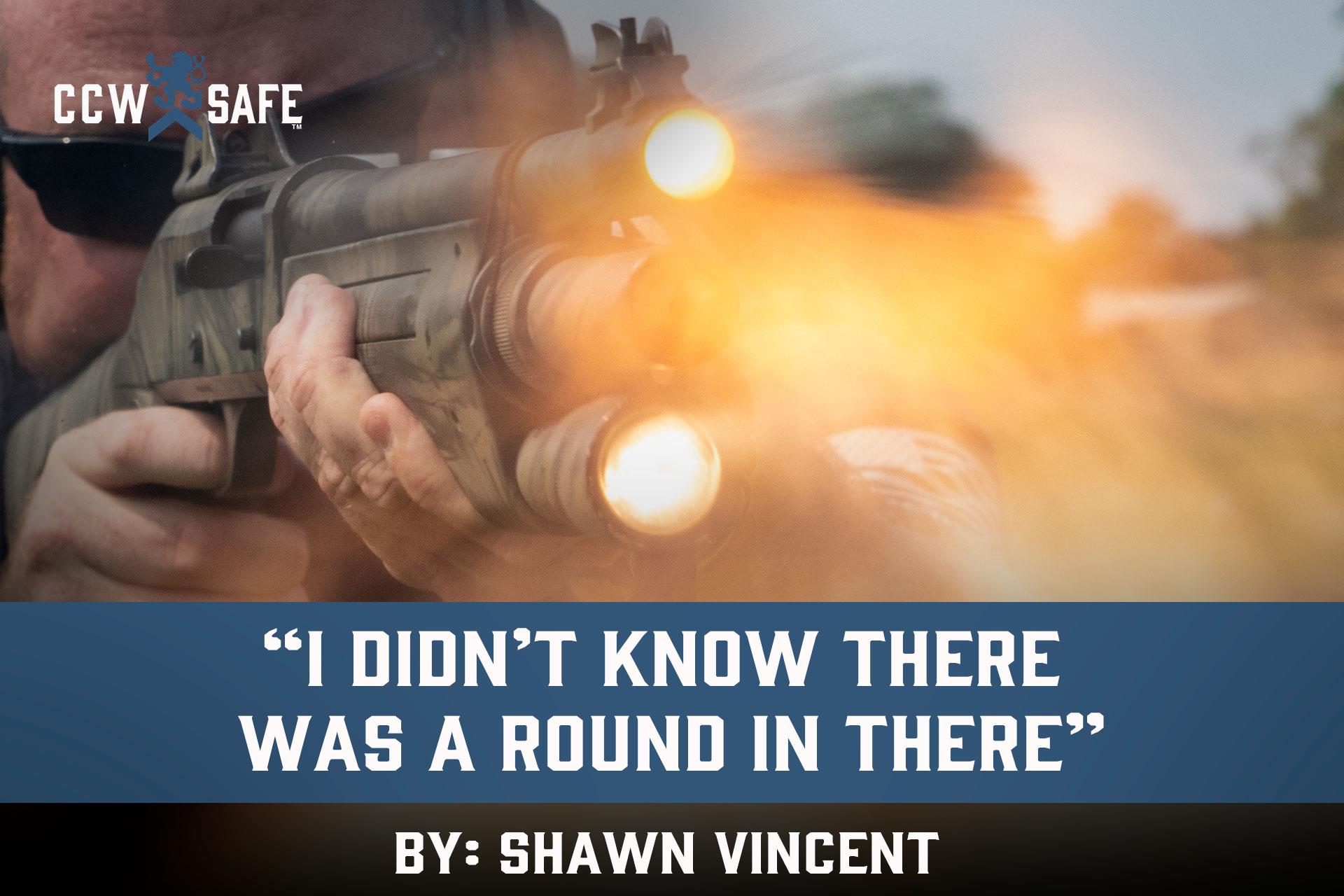
Posted on November 13, 2020
“I Didn’t Know There Was A Round In There” Improper Gun Handling Scuttles a Self-Defense Claim
“I Didn’t Know There Was A Round In There”
Improper Gun Handling Scuttles a Self-Defense Claim
Sgt. Rory McManmon of the Dearborn Heights Police Department questioned Ted Wafer after the fatal shooting of Renisha McBride. “What happened here?” McManmon asked in a recording played to jurors at Wafer’s murder trial.
“A consistent knocking on the door,” Wafer explains in the recording, “and I’m trying to look through the windows, but every time I look through the windows and the door, it’s banging somewhere else. So I open up the door, kind of like who is this? And the gun discharged.”
Wafer learned soon after the shooting that the person banging on his door was an unarmed teenaged girl who was drunk, high, injured, and likely looking for help.
“I didn’t know there was a round in there,” Wafer told McManmon.
If Wafer was telling the truth, without knowing it, he had just scuttled his self-defense claim because self-defense is a deliberate act. You cannot “accidentally” shoot someone in self-defense. Firearms instructor and CCW Safe contributor Steve Moses calls it a “negligent discharge,” and Don West, criminal defense attorney and National Trial Counsel for CCW Safe, says that claiming a shooting was an accident is essentially confessing to manslaughter.
It’s possible Wafer lied about not knowing there was a round in his Mossberg pistol grip 12-gauge shotgun — perhaps in an ill advised and counterproductive ploy to mitigate the consequences. However, if he was telling the truth, it means he was guilty of, if nothing else, disastrously poor gun handling. Steve Moses suggests, that if we take Wafer at his word, the defender violated all four basic rules of gun safety, which are, by Steve’s accounting:
- Treat all guns as if they were loaded;
- Never let the muzzle cover anything that you are not willing to destroy;
- Keep your finger off the trigger until your sights are on the target; and
- Be sure of your target and what is around and behind it.
If Wafer did, in fact, believe his shotgun was unloaded, Steve Moses questions why he would have taken it to the front door. “Some people might believe that just displaying the weapon itself is going to be sufficient enough to deal with the problem, but if you’re not willing to actually shoot somebody in self-defense, you really shouldn’t be carrying a gun.” Steve warns that displaying a gun without the willingness to fire it could potentially embolden an attacker and create a more dangerous situation for the defender.
It’s possible Wafer felt he could quickly charge the weapon if he was threatened. Because many shotguns are not “drop safe,” Steve says trainers often recommend storing them without a round chambered. It’s also possible that, fearful of the loud banging that awoke him at a quarter to four in the morning, Wafer charged the weapon without realizing it when he grabbed it. Regardless of the circumstances, if Wafer had treated the weapon as if it were loaded, he could have avoided the shooting altogether.
Steve suggests, based upon the configuration of the Mossberg shotgun, that Wafer had the barrel elevated, meaning that when the defender opened the front door, the muzzle was directed at McBride’s head. Had the firearm been pointed in practically any other direction, the negligent discharge wouldn’t have cost McBride her life.
As a firearms trainer, one of the first things Steve has to reinforce in his beginner classes is that “you may not put your finger on the trigger until your sights are aligned with the target and you’re making the decision to shoot.” (Steve blames Hollywood, in part, for perpetuating the bad practice, as evidenced by this classic Lethal Weapon poster.)
“If Ted Wafer responded as if he was startled,” Steve says, “then he probably clenched down hard on that shotgun. If you have all three support fingers and thumb on that grip and your finger on the trigger, it’s almost impossible to clench that hand without your trigger finger coming along with it.”
Finally, when Ted Wafer opened his front door, he was surprised to be standing face to face with a shadowy figure. It would have been difficult to know who was there or what they wanted, and Wafer clearly misperceived the threat. He fired, either on accident or on purpose, at a target he wasn’t sure of.
Had Ted Wafer followed any of the four basic gun safety rules, it’s unlikely that he would ever have shot Renisha McBride. If he had been more aware of the readiness of his firearm, it’s unlikely that he’d be serving a seventeen-year prison sentence for second-degree murder.
The prosecutor in the Wafer case accused the defendant of handling the deadly weapon “like a toy.” While that may be hyperbole, it’s clear Wafer wasn’t properly trained on how to safely and effectively deploy his firearm.
Steve says, “He should have learned how to safely operate it and practice so that it’s not something he had to give conscious thought to under a moment of stress. You want to free up your mind under those kinds of circumstances to see what’s going on, process it correctly, and make the best possible decision.”
The lesson for gun owners concerned with home defense is that you should decide the state of readiness in which you feel comfortable storing your weapon; you should train with your weapon often enough that operating it is second nature; and you should know the gun safety rules by heart and never break them.
 |
SHAWN VINCENT- LITIGATION CONSULTANTShawn Vincent is a litigation consultant who helps select juries in self-defense cases, and he manages public interest of high-profile legal matters. If you have any questions for Shawn, or would like more articles like this, let us know belo |